National Park Week, celebrated from April 20–28, 2024, is a time to explore unique places, discover stories of our history and culture, and experience parks near you. Celebrate this year’s National Park Week with the children in your life by teaching them about national parks and encouraging the exploration of these culturally and historically significant areas.
In 2022, the National Park Service celebrated its 106th anniversary and social media celebrated by elevating and learning about the experiences and impact of Black Americans in National Parks.
You can still join the conversation by searching and engaging with #BlackInNationalParksWeek on Facebook, Twitter, and Instagram.
Jump to:
National Park Week Activities
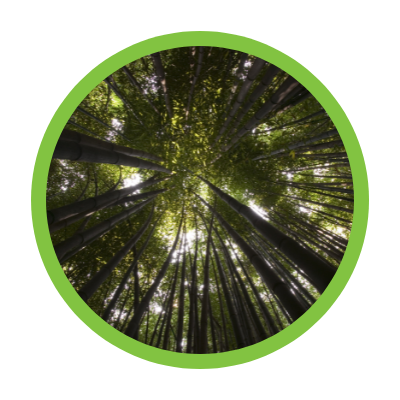
Get outside and visit a park
Many U.S. national parks do not charge entrance fees, but for those that do, be sure to take advantage of the fee-free first day of National Park Week on Saturday, April 20.
Plan your trip at NPS.gov and remember to recreate responsibly— our parks belong to all of us, and everyone needs to do their part to help preserve and protect them. You can also skip the travel time and crowds by looking for a smaller park, preserve, or recreation area with this list of ways to celebrate small parks during National Park Week from our friends at the National Environmental Education Foundation (NEEF).
National Park, Public land? What’s the Difference?
A national park may typically come to mind when thinking about public lands—vibrant areas of land and water designated and protected by the U.S. Government to preserve the natural and cultural resources “for the enjoyment, education, and inspiration of future generations.”
But there are other lands managed by the government. So, what’s the difference?
The National Park System (NPS) is comprised of historical monuments, lakeshores, scenic rivers, and battlefields, in addition to natural landscapes. More than 400 national park sites are recognized in the United States, spanning more than 85 million acres in all 50 states and territories like the Virgin Islands and Guam. There are many kinds of National Park System units (also called designations), and they can only be designated and made official by Congress.
Public land refers to the many natural areas of land managed by the federal government and open for public use. National parks are public lands, but not all public lands are national parks. Other examples of public lands include national forests, monuments, preserves, wildlife refuges, recreation Areas, and more.
The History of National Parks
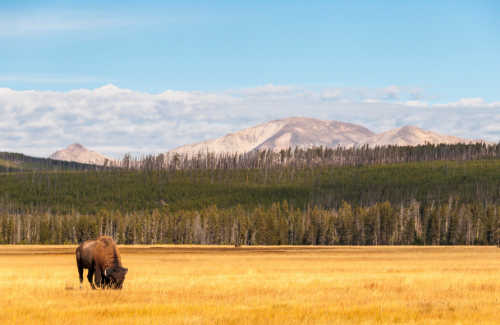 With so many national parks in the United States, have you ever wondered which was the first?
With so many national parks in the United States, have you ever wondered which was the first?
If you guessed Yellowstone National Park, then you would be right! Covering 2.22 million acres in Northwest Wyoming, it is also the 8th largest national park in the United States.
Yellowstone National Park received its official designation in 1872. It is also recognized as a UNESCO biosphere and World Heritage Site. The park’s landscape includes geothermal structures, forests, lakes, rivers, and mountains—so it’s easy to see why Yellowstone National Park welcomes 4 million visitors annually.
With an active and established history spanning over 100 years, the National Park Service (NPS) has an interesting story to tell. You can retrace the history of the NPS using the National Parks Service’s timeline.
Spotlighting the Contributions of Black Americans in the NPS
You may have also wondered how the NPS transformed over time. Many Black Americans have contributed (and continue to contribute) to the development and conservation of parks. We’ve spotlighted a few leaders below, but we encourage you to continue your own research to learn more about how Black American history is preserved and shared in communications and programming across many national parks.
Buffalo Soldiers
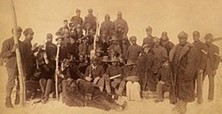 Some of the earliest stewards of our national parks were the Buffalo Soldiers. Initially formed in 1866, the “Buffalo Soldiers” moniker came to refer to the soldiers in four all-Black U.S. Army units. Buffalo Soldiers played a significant role in building roads, fighting forest fires, and protecting parks from poachers for many years. Unfortunately, when the National Park Service was formally established in 1916, Buffalo Soldiers were barred from returning as park protectors in civilian life.
Some of the earliest stewards of our national parks were the Buffalo Soldiers. Initially formed in 1866, the “Buffalo Soldiers” moniker came to refer to the soldiers in four all-Black U.S. Army units. Buffalo Soldiers played a significant role in building roads, fighting forest fires, and protecting parks from poachers for many years. Unfortunately, when the National Park Service was formally established in 1916, Buffalo Soldiers were barred from returning as park protectors in civilian life.
Learn more about the Buffalo Soldiers’ contributions.
Charles Young
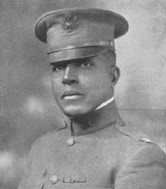
The protection of national parks and their natural habitats was part of the American army’s role in 1903. Colonel Charles Young—soldier, diplomat, and civil rights—was the third Black American graduate of West Point and the first Black superintendent of a U.S. national park when he and his army unit took on the stewardship of Sequoia National Park and developed infrastructure so visitors could experience the parks.
Young only spent one year in Sequoia, But the effects of his work as the first Black park superintendent are still visible—the roadways his unit planned and built in the park are mirrored in other parks today.
And Young’s love for nature also led to him educating his community about conservation practices. His work enhanced the natural spaces he stewarded by reducing animal poaching, deterring illegal logging, and reducing illegal sheep grazing within the park.
Learn more about Charles Young’s contributions.
Betty Reid Soskin
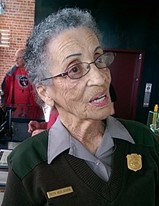
When men and women left for WWII, supplies and support from home were still needed—Black American women worked jobs in manufacturing and the defense industry to support the U.S. military. Their efforts on the home front went largely unrecognized in white communities. Still, they accelerated social change when Black American women and other women of color began pushing for equitable treatment and pay for their work.
Many of their stories were left untold and forgotten, including in our National Parks.
Betty Reid Soskin, civil rights activist, musician, businesswoman, and founder of one of the first Black-owned music stores, wanted to ensure that people could revisit the history and contributions of Black Americans as it was lived by those who lived it.
In the early 2000s, Betty noticed that the sites selected for the Rosie the Riveter World War II National Home Front Park in Richmond, California, which tells the history of people who worked in the defense industry and other home front jobs, were areas of racial segregation—sites that would not reflect the history of Black Americans.
Betty wanted to add the Black American voice to the home front story, so at the age of 80, Betty found her calling in the parks service. Betty led public programs and tours of the Rosie the Riveter National Historical Park, shared her stories and personal experience from WWII, and brought to light the untold stories of Black Americans and other people of color who joined the civilian home front effort.
We encourage you to watch and share this 55-minute video of Ranger Betty Reid Soskin speaking at the Rosie the Riveter Visitor Education Center in Richmond, California, to learn more.
On March 31, 2022, Betty Reid Soskin, the NPS’s oldest active ranger at 100 years old, retired after a decade and a half of sharing her personal experiences and the efforts of women from diverse backgrounds.
Learn more about Betty Reid Soskin’s contributions.
Interested in learning more about the many Black Americans leading in forestry and conservation efforts? Read the Sustainable Forestry Initiative’s recent post celebrating the contributions of Black Americans in conservation.
Black Americans have played and continue to play an important role in the establishment and management of our national parks. Though Black Americans represented more than 13 percent of the American population in 2018, a survey found that less than two percent of U.S. National Park visitors identified as Black.
This month and for the months to come, it’s important to learn about the many vital contributions of Black Americans working in and with the NPS, as well as acknowledge the need for increased diversity and representation amongst both park staff and visitors. National parks must be safe, welcoming, and enjoyable places for everyone.
Explore more great resources to support your learning journey:
-
-
- Twenty & Odd: Exploring 400 years of the African American Experience: Watch this short NPS film to motivate and empower personal connections with national parks.
- It Matters Who You See in Outdoor Media: Read Carolyn Finney’s article on how we can do better to represent and share the contributions of Americans of color who help shape our natural spaces.
- 10 National Parks that Honor Black History: Check out the stories behind ten parks that honor the important history and contributions of Black Americans and make them a part of your next national park trip!
- Bringing Black History to Life in the Great Outdoors: Explore the interactive stories of Black park rangers contributing to “the best idea America ever had.”
-
You can also help grow environmental literacy and expose young people to the great variety of experiences outdoors by encouraging students to read stories about nature that are centered around BIPOC (Black, Indigenous, people of color) protagonists. Encourage the children and young adults in your life to curl up with one or more of these riveting reads.
View this post on Instagram
National Park Service and Green Jobs
PLT Canada defines a Green Job as one that supports nature-based solutions for a more sustainable planet. Green jobs are typically involved in, but not limited to, jobs in the forest sector, parks, conservation, natural resource management, environmental education, sustainable food systems, climate change, carbon sequestration, species maintenance and recovery, water quality and quantity, and more.
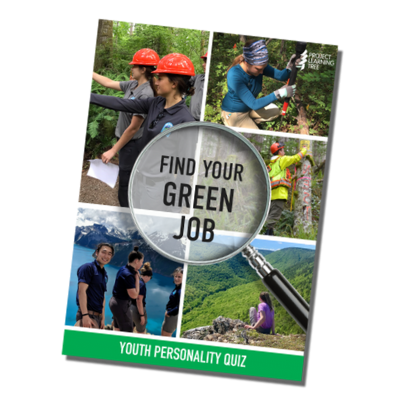
Explore SFI and PLT’s The Journeys of Black Professionals in Green Careers guide, which seeks to ensure that young Black Americans see themselves reflected in green jobs and to inspire them to pursue rewarding careers in the forest and conservation sector.
The NPS employs over 20,000 staff members and engages 280,000 volunteers in various green jobs, including maintenance workers, gardeners, engineers, biological technicians, and park planners. The core workforce for the NPS is comprised of park rangers.
Park rangers are environmental educators and conservationists, specializing in historical interpretation, natural interpretation, resource management, or law enforcement. Park rangers typically work outdoors but may need to spend some time in the office.
Are you interested in helping your students learn about more green job opportunities with the National Park Service, Forest Service, U.S. Army Corps of Engineers, and more?
-
-
- Check out our Green Jobs and Careers in Conservation article exploring the many different green jobs available in public and private sectors.
- Try out our online Green Jobs personality quiz! Educators can administer a youth version of this quiz to their students. By answering a few simple questions online, young people will receive recommendations for a few different green career paths that suit their personality.
-
Public Land and Park Planning
One of the NPS’s important roles is planning to ensure the long-term use of our parks for future generations. This process includes establishing guidelines for how a park may be used by the public, making decisions about sustainable resource management, and monitoring of management plans.
Park planning is no easy task, as planning collaborators include Indigenous Peoples and residents in nearby communities, including existing and future park users. But collaboration is imperative to allow all voices to be heard when discussing the approved use of land and water while ensuring the protection of the environment.
Celebrate National Park Week With Your Learners
PLT’s Explore Your Environment: K-8 Guide contains many activities to help Kindergarten through Grade 8 students celebrate National Park Week, including:
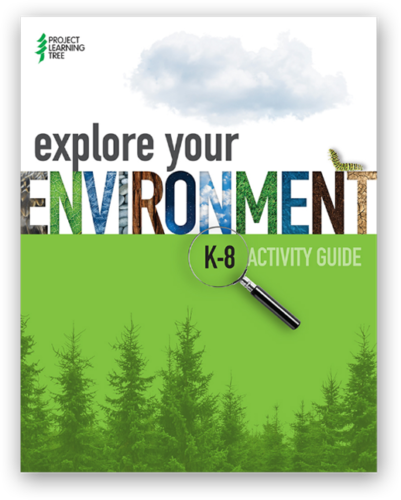
Decisions, Decisions
Many stakeholders are involved in the decision-making process when managing a national park. Have your students develop plans to address stakeholder land-use issues with this activity and exercise in collaboration.
Improve Your Place
Part of park planning for national parks includes assessing natural resources and making management decisions to improve the sustainability of those resources. This activity is also an excellent way to engage your students in thinking about what changes they can make in their community to improve the environment.
Our Federal Forests
Students learn how forests can be managed to meet a variety of human and environmental needs and examine national parks to identify challenges that forest managers face meeting different needs.
Purchase a print guide or download an e-book directly from PLT’s Shop and find out about professional development workshops offered around the country through PLT’s local state network. From April 1-May 18, 2024, use coupon code EARTHDAY24 to get 20% off the Explore Your Environment e-book!
Introduce Your Young Learners to National Parks
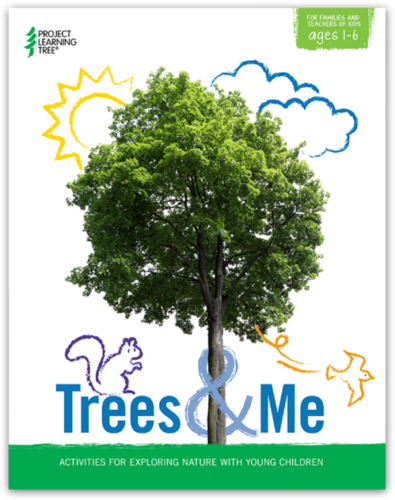
PLT’s Trees & Me: Activities for Exploring Nature with Young Children Guide contains many activities to help young children between one and six-years-old to celebrate National Park Week, including:
Activity 2: Sounds Around
Many sounds can be observed by living and nonliving things in national parks. This activity helps children explore the sounds of nature and incorporate the knowledge they learn into their everyday world.
Activity 3: Tree Textures
Park rangers lead hikes and field trips and teach visitors what makes each national park special and what we can do to care for parks. Have children lead their own field trip by engaging them with various textures found in national parks and by learning to handle natural objects.
Purchase a print guide or download an e-book directly from PLT’s Shop and find out about professional development workshops offered around the country through PLT’s local state network. From April 1-May 18, 2024, use coupon code EARTHDAY24 to get 20% off the Trees & Me e-book!
More Ways to Celebrate
Here are some more ways students can explore national parks while learning about sustainable forest management, land use, and public planning:
Explore National Parks in Your Area and Beyond
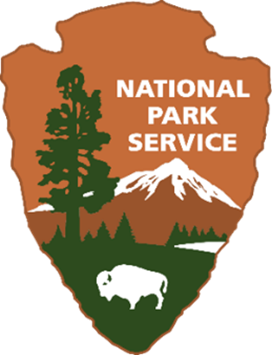
With over 400 national park sites in the United States, there is plenty to explore during National Park Week. The National Park Service Website has developed a “Plan Your Visit” tool that you can use to locate local national parks nearby.
Try out PLT’s adapted Get in Touch With Trees family activity to explore trees with your sense of touch. You can also pair this activity with PLT’s adapted Sounds Around activity to teach children about their sense of sound and explore the sounds national parks provide, from birds singing to trees rustling in the wind.
Can’t make it to a park?
Take a look at the virtual tours created by Google Arts & Culture and explore Alaska’s Kenai Fjords National Park, Hawai’i Volcanoes National Park, New Mexico’s Carlsbad Caverns National Park, Utah’s Bryce Canyon National Park, and Florida’s Dry Tortugas National Park.
Take Part in the Every Kid Outdoors Program
The Every Kid Outdoors program gives fourth-grade students and their families free access to hundreds of National Parks, lands, and waters for an entire year. Fourth-grade educators can also download an activity and print paper passes for each of their students.
Learn About Forests in National Parks and Nearby
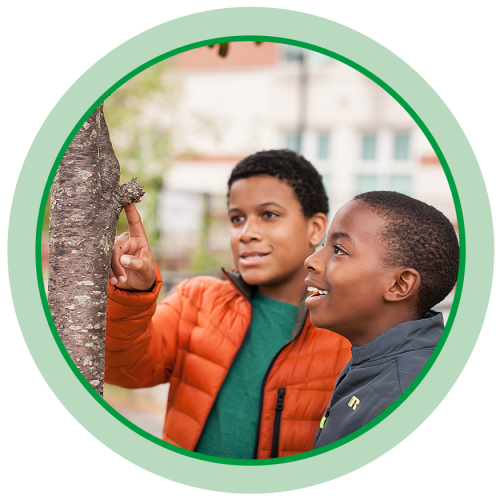 Teaching with i-Tree:
Teaching with i-Tree:
Many of the national parks in the United States include forested areas that provide many important ecosystem services. Have your students discover the many benefits trees and forests provide using PLT’s Teaching with i-Tree unit. Middle and high school students can use the i-Tree Design Software to calculate, for example, the monetary value of trees based on the benefits they provide.
Learn About Forests Toolkit:
PLT’s free Learn About Forests activities are the perfect tools to bring with you to national parks (or even a city park or nearby playground) to help middle-school-aged kids learn about trees and forests. There are 12 free, hands-on activities for ages 10 to 16.
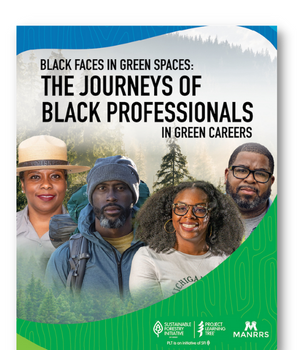 Green Career Resources for Young Black Americans – new resource!
Green Career Resources for Young Black Americans – new resource!
Becoming a park ranger is just one of many potential green career pathways!
Hear about the many diverse journeys of Black Americans who have pursued careers in forestry and conservation, and who have advice and resources to share.
Discover new resources to inspire young Black Americans to pursue forest and conservation careers with the SFI-PLT-MANRRS Black Faces in Green Spaces: The Journeys of Black Professionals in Green Careers guide.
The guide highlights 22 Black Americans who share their personal stories about finding their passions and overcoming challenges, and offer advice to the next generation about exploring their own careers in the forest and conservation sector.
Download or buy an individual copy, purchase a box of guides, or donate a box of Journeys guides to a Historically Black College and University (HBCU) or Minorities in Agriculture, Natural Resources, and Related Sciences (MANRRS) chapter.
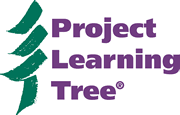
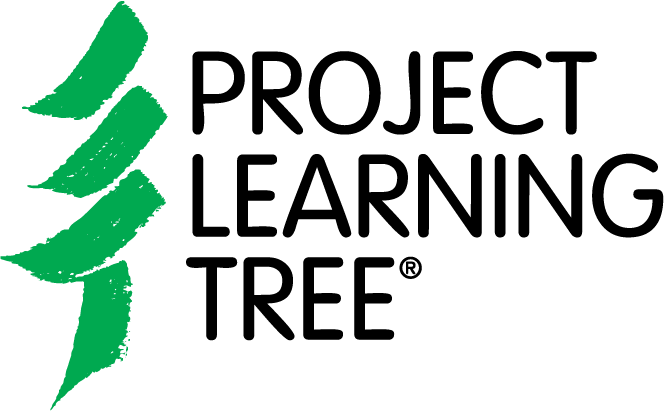


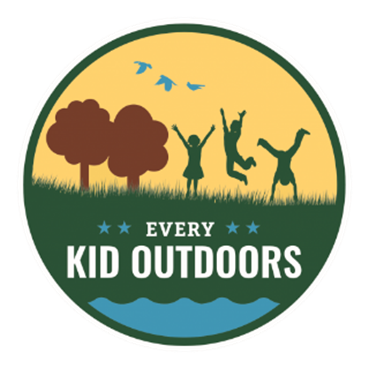
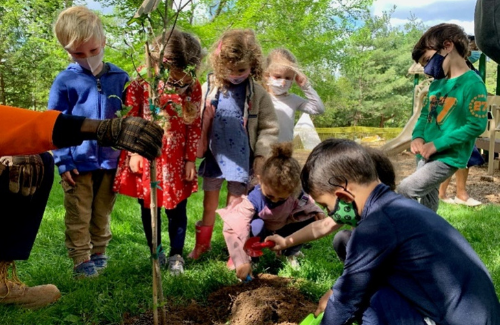

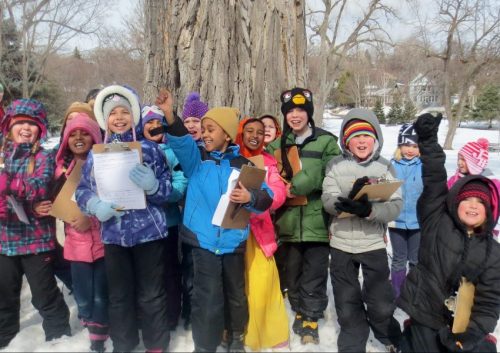 Heirloom Seeds Co.
Heirloom Seeds Co.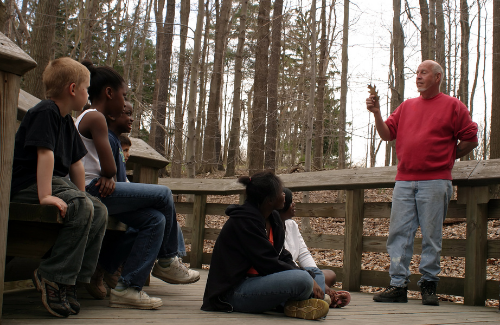 a difference in the lives of you, your child, and your community.
a difference in the lives of you, your child, and your community.